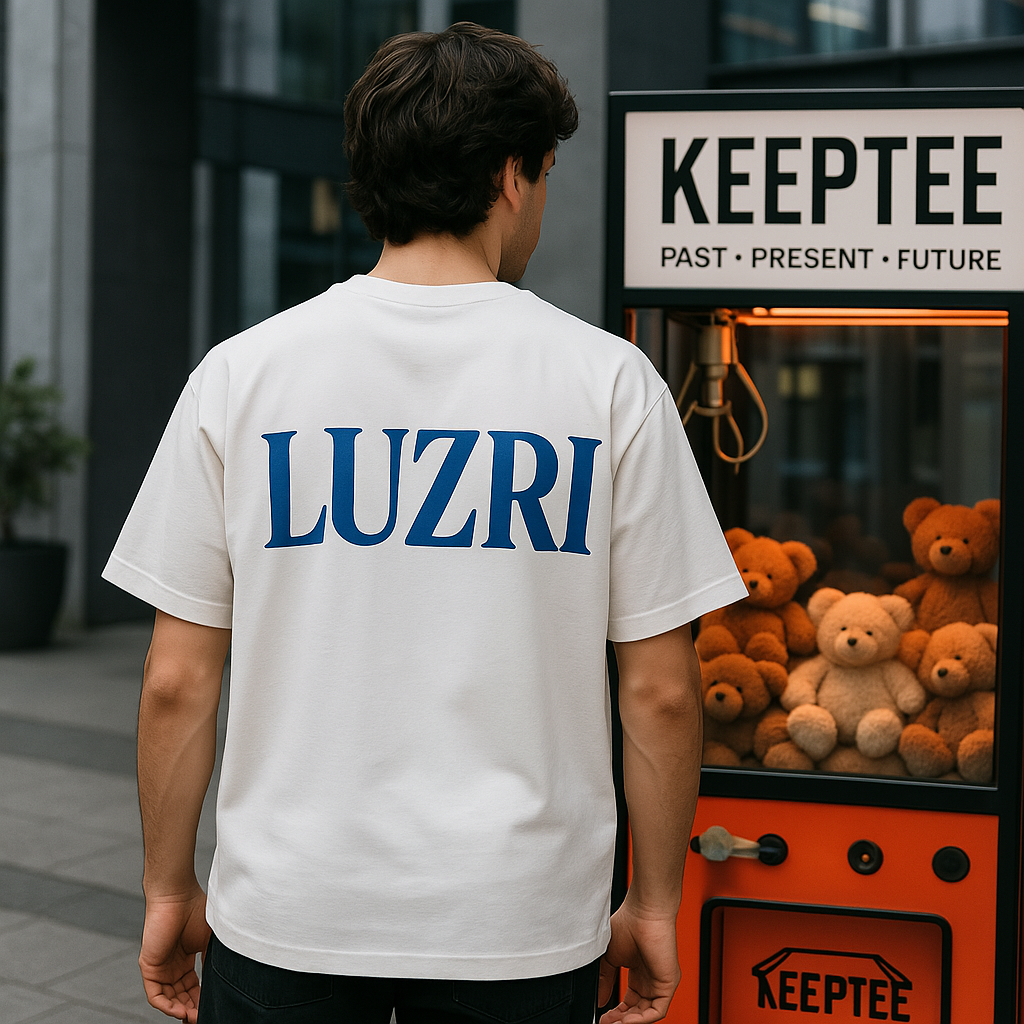
The Everlasting Appeal of the T‑Shirt: A Journey Through History, Culture, and Innovation
The Everlasting Appeal of the T‑Shirt: A Journey Through History, Culture, and Innovation
The T‑shirt is one of the most ubiquitous pieces of clothing in the world. A simple garment that once served as undergarment for laborers and servicemen, today the T‑shirt is a canvas for self-expression and creativity, worn by people of all ages and social backgrounds across the globe. This article will explore the evolution of the T‑shirt, discussing its origins, transformation in fashion, the methods of production, cultural influence, and its future trends.
A Brief History of the T‑Shirt
The origins of the T‑shirt can be traced back to the early 20th century. Initially designed as undershirts, T‑shirts were made from lightweight cotton to provide comfort and breathability. They were widely adopted by military personnel during World War I and World War II for their practicality. Soldiers found that this style of garment was easy to wear beneath uniforms during hot weather. After the war, the T‑shirt became a symbol of casual style, transitioning from its humble beginnings as an undergarment to a statement piece of everyday fashion.
During the 1950s, Hollywood played a pivotal role in popularizing the T‑shirt as outerwear. Iconic images of movie stars like Marlon Brando and James Dean in fitted T‑shirts in films such as The Wild One and Rebel Without a Cause cemented the garment’s position as a symbol of youthful rebellion and nonconformity. Its association with counterculture movements only served to enhance its appeal across various generations.
The Transformation into a Fashion Staple
Over time, the T‑shirt evolved beyond its basic function. Designers began to realize its potential as an inexpensive medium for artistic expression. From printed slogans and elaborate graphics to hand-painted styles and fabric embellishments, the T‑shirt became a platform to project political, social, and personal statements. Today, the T‑shirt is found in every wardrobe, from designer label collections to fast-fashion outlets, reflecting a range of aesthetics from minimalist to avant-garde.
High-fashion designers, such as Karl Lagerfeld and Marc Jacobs, reimagined the traditional T‑shirt by incorporating luxurious fabrics, embellishments, and unconventional silhouettes. Their interpretations not only elevated the T‑shirt’s status but also demonstrated its versatility. In the realm of streetwear, the T‑shirt serves as an essential element of urban style, often utilized as a statement piece in layered ensembles. In this way, the humble T‑shirt has evolved from an undergarment into a multifaceted, culturally significant piece of clothing.
Materials and Production Techniques
The modern T‑shirt is predominantly made from cotton—a natural fiber known for its softness, breathability, and comfort. However, as consumer demands change, manufacturers have begun exploring alternative materials and blends to improve sustainability, performance, and durability. Innovations in textile technology have led to the production of T‑shirts from organic cotton, recycled polyester, and even bamboo fibers. These materials not only appeal to environmentally conscious consumers but also offer unique textures and performance benefits, such as moisture wicking and enhanced durability.
Production techniques have also evolved. Traditional screen printing has long been a popular method for decorating T‑shirts, allowing for vibrant colors and detailed designs. Advancements in digital printing now enable designers to create intricate designs with exceptional color accuracy, making it possible to produce limited edition pieces with artistic flair. In addition, sublimation printing has expanded the realm of possibilities, particularly on polyester fabrics, allowing for full-coverage prints that maintain their vibrancy and durability after multiple washes.
The Role of the T‑Shirt in Popular Culture
The cultural impact of the T‑shirt extends far beyond simple fashion. Over the decades, it has been used as a tool for self-expression and activism. From political protest designs that feature slogans or powerful imagery to celebrity endorsements and band merchandise, T‑shirts carry messages that resonate with personal beliefs and societal movements.
For example, the 1960s and 1970s witnessed the rise of T‑shirts as wearable protest symbols during various social movements. Activists used this medium to spread awareness about issues such as civil rights, war, and environmental protection. Similarly, the punk rock scene adopted T‑shirts as a form of anti-establishment expression, with distressed graphics and rebellious slogans that challenged mainstream norms.
In recent times, T‑shirts have emerged as effective tools in marketing and branding. Companies and organizations utilize custom T‑shirts to build brand identity, sponsor events, or commemorate significant milestones. The accessibility of the T‑shirt as a marketing tool lies in its simplicity and universal appeal, making it an essential medium in today’s visually driven world.
Customization and Personal Expression
One of the defining features of the modern T‑shirt is its capacity for customization. Consumers can now easily create their personalized T‑shirts using online platforms that allow them to design from scratch or modify existing templates. Custom T‑shirts are popular gifts, souvenirs, and even corporate swag items. Social media platforms have amplified this trend, with influencers and content creators promoting their bespoke designs to their followers.
The DIY (do-it-yourself) movement has also embraced the T‑shirt. Artisans and craft enthusiasts experiment with tie-dye techniques, fabric painting, embroidery, and appliqué. The resulting garments are not only unique works of art but also tangible expressions of personal style and creativity. This trend has expanded as more people seek to distinguish themselves from mass-produced fashion, highlighting the T‑shirt’s role as an instrument of individual identity.
Environmental and Ethical Considerations
With the explosion of fast fashion, environmental and ethical concerns surrounding textile production have come to the forefront. The T‑shirt industry is no exception, as the vast majority of garments are produced using methods that can have significant environmental impacts. Traditional cotton farming is water-intensive and often relies on pesticides, while mass production methods contribute to carbon emissions and waste.
In response to these challenges, many companies are now prioritizing sustainability. The adoption of organic cotton and recycled materials is increasing, and eco-friendly production processes are being implemented to reduce water usage, minimize chemical waste, and lower energy consumption. Fair trade practices and improved labor conditions are also receiving attention in the industry. Consumers are progressively demanding transparency, and ethical production has become a selling point for many brands.
Sustainable fashion initiatives are encouraging companies to adopt a “slow fashion” mindset, emphasizing quality, longevity, and environmental responsibility over quantity. As part of these efforts, some brands have introduced take-back programs and recycling initiatives to minimize the environmental footprint of discarded garments. The evolution of the T‑shirt industry toward a more sustainable model marks a positive shift in consumer behavior and corporate responsibility.
The Psychological and Social Impact of T‑Shirt Design
Beyond its physical characteristics, the T‑shirt also exerts a unique psychological and social influence on wearers and observers alike. Fashion experts often note that clothes serve as an extension of the self—offering insights into personality, affiliations, and social status. This is particularly true for T‑shirts, which display a range of messages, images, and artistic statements.
For many, the design of a T‑shirt reflects personal beliefs, cultural identity, or even humor. A witty slogan can provoke smiles and spark conversations, while a graphic design might evoke nostalgia or align with one’s worldview. In community settings, matching T‑shirts can create a sense of belonging and camaraderie among members of clubs, sports teams, or protest groups. In this way, the T‑shirt functions as a social equalizer—bridging gaps between demographics and fostering communal identity.
Furthermore, the psychology behind fashion choices often links back to self-esteem and confidence. Wearing a T‑shirt that resonates with one’s personality can empower individuals, enhancing their sense of self-assurance. Designers continue to experiment with typography, colors, and imagery to evoke emotional responses, ensuring that the T‑shirt remains a dynamic form of wearable art.
Technological Innovations and Future Trends
The intersection of technology and fashion continues to redefine the possibilities of T‑shirt design and production. With the advent of smart textiles, researchers and designers are exploring fabrics that go beyond conventional functionality. Imagine a T‑shirt that monitors health metrics, changes color with temperature, or adapts its pattern according to environmental stimuli. These cutting-edge innovations hold the potential to revolutionize everyday apparel, merging technology seamlessly with style.
Digital tools have also transformed the production process. Computer-aided design (CAD) software allows designers to experiment with complex patterns and simulate fabric behavior before a garment is even produced. In tandem, advancements in robotics and automated manufacturing have streamlined production processes, reducing labor costs and ensuring consistency in quality. These technological strides promise a future where custom designs can be produced on-demand, significantly reducing waste and aligning production more closely with consumer demand.
As augmented reality (AR) and virtual reality (VR) technologies gain traction in the retail space, consumers may soon have the opportunity to virtually try on T‑shirts or visualize custom designs before making a purchase. These immersive experiences could redefine how we interact with clothing, providing a more personalized and engaging shopping process. The fusion of technology, design, and sustainability is poised to keep the T‑shirt relevant in an increasingly digital and environmentally conscious world.
The Global Market and Economic Impact
The T‑shirt industry is a formidable sector within the broader global apparel market. Its affordability and mass appeal contribute to a robust economic ecosystem that spans from design and manufacturing to retail and marketing. Small businesses, independent artists, and large corporations alike participate in this diverse marketplace. The low barrier to entry has allowed entrepreneurial ventures to flourish, particularly in the realm of online custom T‑shirt businesses.
Global supply chains for T‑shirts are complex, often involving several countries at various stages of production—from cotton farming and textile manufacturing to printing and distribution. The industry’s economic impact is significant; it provides employment, stimulates local economies, and serves as a critical component of cultural export. Moreover, the proliferation of online marketplaces and social media marketing has democratized the industry, allowing small-scale producers to reach global audiences without the traditional overhead costs associated with brick-and-mortar retail.
Major fashion capitals such as New York, London, and Tokyo are hubs for innovative T‑shirt designs. Their influence extends far beyond local markets, shaping international trends and setting the stage for new styles and sustainable practices. As consumer demand evolves, the T‑shirt market continues to adapt, playing a central role in the economic landscape of the fashion industry.
The Art of T‑Shirt Collecting and Memorabilia
For many enthusiasts, T‑shirts transcend their role as everyday apparel and become collectible items imbued with nostalgia and personal significance. Concert T‑shirts, vintage sports jerseys, and limited-edition designer collaborations are often treasured not only for their aesthetic value but also as tokens of memorable experiences. These garments serve as wearable memorabilia, encapsulating moments in time such as concerts, film releases, or significant cultural events.
Collectors are drawn to rare or historically significant T‑shirts, which often appreciate in value over time. This phenomenon has given rise to dedicated T‑shirt conventions, trade shows, and online communities where enthusiasts buy, sell, and share the stories behind their prized items. For these collectors, the appeal of a T‑shirt lies not solely in its fabric and print but in the narrative it carries—a story of cultural moments and personal memories. The collectible aspect underscores how the humble T‑shirt can serve as both a functional item and an artifact of cultural heritage.
Customization and the Democratization of Fashion
The rise of digital platforms and e-commerce has had a profound influence on the T‑shirt’s role in democratizing fashion. In the past, high-quality or custom-designed apparel was often associated with exclusivity and high cost. Today, however, technological advances have made it easier and more cost-effective for individuals to design and purchase custom T‑shirts. This shift has empowered consumers, encouraging them to take control of their personal style and express themselves in ways that were once the domain of professional designers.
Online tools allow users to experiment with various design templates, graphics, and color palettes to create their unique pieces. This ease of customization has not only boosted creativity but has also enabled small businesses to thrive by offering personalized products that cater to niche markets. The democratization of fashion via the T‑shirt is part of a larger movement toward individualized consumer choices, highlighting a shift from mass production to personal expression.
Challenges in the Modern T‑Shirt Industry
While the T‑shirt remains an enduring staple in global fashion, it is not without its challenges. The fast pace of trends, coupled with the pressures of mass production, has raised concerns about quality control and environmental sustainability. Consumers are increasingly aware of the ethical implications of their clothing choices, pushing brands to prioritize fair labor practices and sustainable sourcing. This pressure to “do better” is prompting significant shifts in how the industry operates.
In addition, maintaining a balance between affordability and sustainability poses a constant challenge. As eco-friendly materials and ethical production practices often come with higher costs, brands must find ways to bridge the gap without alienating price-sensitive consumers. The industry’s response has been varied, with some companies investing heavily in transparency and sustainability initiatives, while others continue to rely on traditional, cost-effective methods of production.
Looking Ahead: The Future of the T‑Shirt
As we peer into the future, the T‑shirt is poised to continue its evolution, driven by technological innovation, cultural shifts, and changing consumer values. Expectations for sustainable manufacturing, personalized design, and smart textiles suggest that the T‑shirt will remain not only relevant but also a barometer of broader trends in the fashion industry. Future advancements may include garments that are fully recyclable, equipped with embedded sensors to monitor biometric data, or produced through entirely digital workflows that minimize environmental impact.
The forward-thinking trajectory of the T‑shirt reflects a broader societal trend where clothing serves as both a practical necessity and a powerful medium for communication. As cultural narratives shift and technology advances, the T‑shirt will undoubtedly adapt, maintaining its status as an accessible, versatile, and symbolic garment. Its future lies in a blend of innovation and tradition—a confluence of the past and the possibilities of tomorrow.
Conclusion
The journey of the T‑shirt from a simple undergarment to a global symbol of self-expression and identity is a testament to its enduring appeal. Over the decades, this unassuming garment has undergone remarkable transformations, evolving alongside cultural, technological, and economic shifts. It has traversed the realms of military utility, high-fashion runways, protest movements, and DIY creativity, shaping and reflecting societal norms along the way.
Its significance is multifaceted: the T‑shirt is a medium for personal expression, a tool for marketing and branding, a collectible that encapsulates historical moments, and a cornerstone of sustainable innovation. Its evolution is marked not only by changes in design and production but also by its ability to capture the zeitgeist of every era it touches. From the early days of simple cotton fabric to the modern era of eco-friendly materials and digital customization, the T‑shirt remains a versatile garment that continues to adapt to the needs and desires of its wearers.
As we move forward, the future of the T‑shirt will be shaped by a delicate balance between technological progress, sustainability, and creative expression. Advances in smart textiles and digital printing will further refine its production, while ethical manufacturing practices will ensure that it can be enjoyed by future generations without compromising the health of our planet. Ultimately, the T‑shirt symbolizes the intersection of art, technology, and social identity—a canvas upon which millions paint their stories every day.
In summary, the T‑shirt is more than just a piece of clothing; it is an emblem of individual and collective identity, a platform for political and social commentary, and a reflection of our shared human experience. Its journey from a practical garment to a cultural icon underscores the importance of adaptability and innovation in the ever-evolving world of fashion. As trends shift and new technologies emerge, the T‑shirt will undoubtedly continue to serve as both a reflection of and a contributor to the narrative of contemporary society.
Its unpretentious simplicity belies the depth of influence it has had on the fashion world. The next time you put on a T‑shirt, consider the rich tapestry of history, art, technology, and social expression woven into its fabric. Whether it is a printed design that speaks to your soul, a minimalist style that underscores your simplicity, or an eco-friendly garment that aligns with your values, the T‑shirt stands as a testament to the enduring spirit of creativity and innovation that drives us all.
In conclusion, the humble T‑shirt has come a long way from its origins as a basic undergarment. Today, it is a multifaceted icon in the world of apparel—a piece that is at once intimate, expressive, and globally recognized. As we continue to innovate and adapt, the T‑shirt’s relevance remains unchallenged, echoing the ever-present human need to express who we are and what we stand for in an increasingly complex world.




Add a review
Your email address will not be published. Required fields are marked *